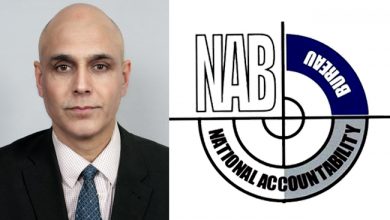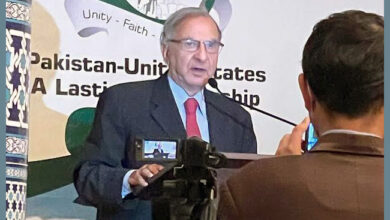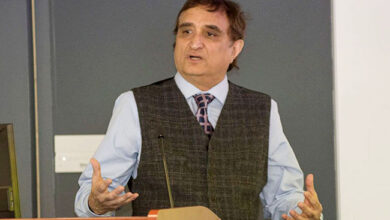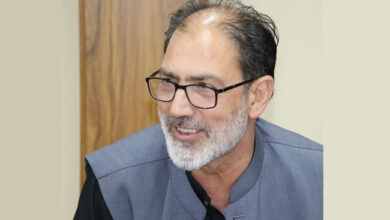The conflict in Kashmir and its cultural matrix
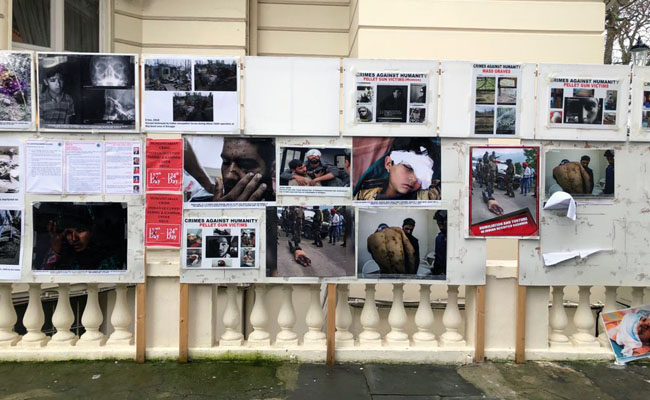
Written By: Franca Colozzo
The conflict in Kashmir is not only the cause of nationalistic Indo-Pak interests, exasperated by the end of English colonialism, but above all a cultural phenomenon that has its roots in the cultural transformations that have taken place in the country over the centuries.
We are within what are called anthropological observations of complex social phenomena, accompanied by psychological and pedagogical motivations.
No historical phenomenon has a unidirectional key, but it always turns on complex aspects that take into account multiple factors.
The spiritual matrix of the Kashmiri has its deepest roots in music, poetry and literature which have undergone a slow evolution from ancient and medieval times to modern times, especially after the division of 1947.
This intellectual legacy, a very high human potential, must not be lost in the rivulets of the conflict where, having remained a highly conflicting and unfair state of war for too many years, those spiritual instances that harmonized the Kashmiri community seem to be moving away.
After 1947, when the umbilical cord linking Kashmir and the entire Indo-Pakistani region to the English colonial power was cut, a slow disruptive process of collective creativity began, which resulted in a shattering of the social of the region.
The partition of 1947, with all the posthumous consequences and still pending with the aggravating circumstance of the Indian curfew from August 5, 2019, and a form of Indo-Pakistani jingoistic nationalism, with the inherent exasperation of conflicting aspects, led to a laceration of the social structure of Kashmir.Cultural disintegration, therefore, in addition to socio-political factors, linked to tensions that go beyond the harmony and community mysticism of that people.
Forced nationalism of an Indo-Pakistani background certainly does not help amalgamating past traditions.The anthropological key of interpretation certainly serves to better understand the current situation and the innermost motivations of the conflict to identify the factors that come into play in the grueling siege period and in the most ferocious and gruesome disputes, with episodes of violence and intolerance.
In particular, focus on the only important aspect of Kashmiri culture which is diagonally contrary to the basis of the conflict in that country.
I believe that the collective cultural base can help to bridge social lacerations, helping to weld common ideas against those that tend to be discordant or openly hostile. On the other hand, the disintegration made by India (“Dìvide et impera”, an ancient Latin motto that means: “Divide and command”) managed to disrupt the social structure to impose Indian control over the population.
Social conflicts, according to the most modern schools of thought, are attributable to a cultural change (structural-functional theory of social systems) or a psychoanalytic theory of personality (LeVine, 1961). In the case of Kashmir, the social conflict has exacerbated, resulting in continuous situations, deliberately induced, of “tensions” “stress”. (Studies carried out by Siegel & Beals, 1960).
Breaking a social organization, stratified for some time, such as that of Kashmir, means bringing a social amalgam to disintegration, an effect more deterrent than a bomb (social bomb in this case).
The stresses are external pressures such as the acculturative pressures that act on society, while the cracks are internal cracks and interruptions within the social system. Carrying out stress and selectivity, randomness and complexity, duration to the bitter end, a strong impact from stress is obtained.Now a “pervasive partisan” protracted over time can be more disruptive than a war waged on the battlefield, since a war, rather than dividing social groups, can offer ample space for solidarity.Hence perhaps the desire on the Indian side to keep in check an entire people, defenseless and succubus, experienced by the violence perpetrated on some groups or individuals who have exposed themselves more verbally and in aggregates, becoming victims of the executioners ready to use force on the weak.
Just as studied are the attacks on the division that operates “schismatic factionalism”, tending to dissolve cohesive, rather well organized groups belonging to a larger and more arched group.
Even more insidious is the so-called “pervasive factionalism”, a phenomenon of socio-cultural change that involves conflicts between unorganized and transient subgroups. It is therefore assumed that pervasive factionalism occurs in the interaction of certain external pressures with certain existing models of tensions present in the community. Both of the latter two types of factions lead to a growing abandonment of cooperation activities.
A multiplicity of anthropological, socio-economic, structural (demographic variables such as the proximity between the parties in conflict, or ambiguity of role or status) and psychological factors of each individual’s experience, often at a collective Jungian level, come into play so that every conflict has such different and complex facets to identify. Sometimes conflicts are disruptive and maladaptive while other times they are.
HISTORICAL, STRUCTURAL, CULTURAL AND SOCIO-POLITICAL ASPECTS OF KASHMIR.
A SHORT STORY OF KASHMIR
Etymology of the name Kashmir, derives from “Ka”, whose meaning is “water”, while “shimir” means “to dry”, therefore, Kashmir means “land dried by water”, as shown by geological studies.But what was Kashmir in the past? A sorting and meeting point for people from an ethnic-cultural variety such as Greco-Roman, Iranian, Eastern Mongolian and Indo-Aryan. But it was the home of “Indians” or “Indo-Aryans”.
Past conflicts take us back in time when Indo-Aryan politics weakened and made the region vulnerable to conquest. However, Kashmir was strong enough to resist even the great conqueror, Mahmood of Ghazni.
Thus it was that Kashmir was subjected to the Muslim religion not by an external request but by a local revolution led by a Muslim officer of the last Hindu sovereign queen Kota.
The feudal monarchy was rampant during Jayasingha’s rule in the 12th century. That was a period of political turmoil when Hindu culture, the various castes and class orders, appeared crystallized in society.
From the ancient mythological beliefs according to which the valley of Kashmir was once a large lake called Satisar, which means the “lake of Sati or Durga”, Hindu goddess, the origin of Kashmir is lost in the myth or Sanskrit scriptures (Nilamatapurana) , or in Buddhist or Puranic literature. Legend has it that the lake was dried up through extraordinary events that involved demons, gods and a particular sage (rishi), Kashyap.
Since then the land that emerged from the water became known as Kashyapamar or Kashmir, named Rishi Kashyap, which means “land dried by the water”; Ka in Sanskrit means water, Shimira means to dry.
Thus reads a verse from Nilamatapurana: “Kashmir can be conquered by spiritual merits but not by the strength of the soldiers”.
This document will focus mainly on the large region of Kashmir, which is the current state of Jammu and Kashmir (J&K) and Azad Kashmir administered by Pakistan.The cultural divisions of the state of J&K include Dugar, Ladakh, Baltistan, Gilgit (land of the Darts), Mirpur-Poonch-Muzaffarabad and the Kashmir Valley (Koul, 1972).
When the economic began to collapse, internal tensions intensified, Indo-Aryan politics weakened and made the region vulnerable to conquest. Dynasties rose to power and fell. Revolts began against the oppressors. Military leaders and adventurers exploited the riots to their advantage. Kashmir fell prey to insurrections.
The cultural richness of Kashmir and the presence of historiographers of the time made it possible to find these historical news taken from the news: “Rajtarangini” (The river of the kings), written by Kalhana. The historian and poet Kalhana lived during Jayasingha’s rule in the 12th century. He experienced a period of political turmoil in Kashmir. It was a time when Hindu religion and culture, its caste and class orders, were completely dominated by a feudal monarchy.
In the mid-twelfth century the Shah Mirza became the first Muslim monarch of Kashmir inaugurating the Salatin-i-Kashmir dynasty, Sultans of Kashmir.
Since then, for the next five centuries, Kashmir was ruled by various Muslim sovereigns, among whom it is necessary to remember both Sultan Sikandar, called the Iconoclast, also called Alexander, (1398), and so on. The Mughal dynasty dominated Kashmir until 1751. The Afghan Durrani dynasty ruled Kashmir from 1752 to 1820.
In 1820 the Sikhs, under the leadership of the maharajah Ranjit Singh annexed the region and governed it until 1846. From that year the maharajah Gulab Singh became governor of Kashmir under the patronage of the British Empire. The Dogra dynasty dominated Kashmir until 1947. With the end of the British Raj in India, the principality became the subject of contention between three different nations, India, Pakistan and China.
Now, summing up and without going into the details of what was a glorious and independent past, until the last period under British colonization, it is clear that the social structure of Kashmir is not comparable with the Indian one for a whole series of social and cultural stratifications. So the dispute, which has lasted 72 years between India and Pakistan, there should be a way out to ensure that traditions, culture and social of such an ancient people find the right answer in independence.
It would therefore be anachronistic to impose on the Kashmiri population or a diaspora or a forced invasion through transplants of the Indian population in such a different and articulated context as that of the J&K.
It would mean distorting its social and cultural roots, as can be seen from the anthropological and historical studies I mentioned. Perhaps, more than the war, this is the strategy pursued by India, a strategy bitterly without return.

